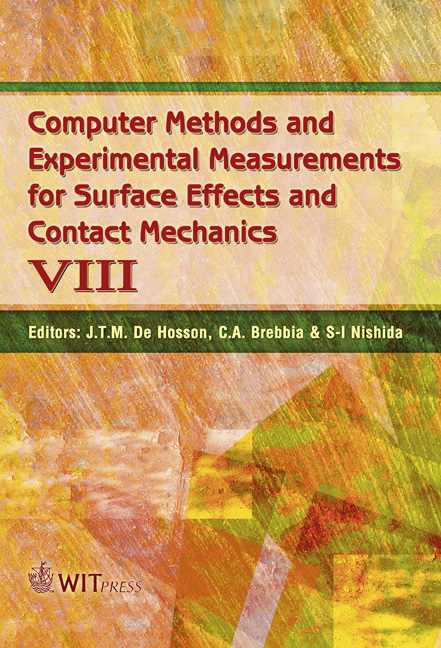Effect Of Carburizing On Fatigue Behaviour In A Type 316 Austenitic Stainless Steel
Price
Free (open access)
Transaction
Volume
55
Pages
10
Published
2007
Size
1,145 kb
Paper DOI
10.2495/SECM070061
Copyright
WIT Press
Author(s)
K. Tokaji & M. Akita
Abstract
The effect of carburizing on fatigue behaviour of smooth and notched specimens and corrosion fatigue behaviour was studied in a type 316 austenitic stainless steel. The fatigue strength of the smooth specimens was considerably increased by carburizing and the specimens with a thick case exhibited longer fatigue lives than the specimens with a thin case. The fatigue strength of the notched specimens was also increased by carburizing and the extent of increase in fatigue strength decreased with increasing stress concentration factor and then saturated. A slight increase in notch sensitivity by carburizing was seen. In 3%NaCl aqueous solution, the carburized smooth specimens showed no reduction in fatigue strength, indicating the excellent corrosion resistance of the carburized case. Keywords: fatigue strength, notch effect, corrosion fatigue, carburizing, case depth, austenitic stainless steel. 1 Introduction In recent years, it has been strongly required to extend the service life of machines and structures due to economic and environmental reasons. To achieve this requirement, various surface engineering techniques have become major interest because they can provide additional properties such as high strength, thermal barrier, and corrosion and wear resistance. Austenitic stainless steels have excellent corrosion resistance, but they posses relatively low strength and poor wear resistance. Therefore, it is significant to improve those properties by surface treatment. When surface-modified materials are applied to load-bearing components, fatigue properties are critical. Until
Keywords
fatigue strength, notch effect, corrosion fatigue, carburizing, case depth, austenitic stainless steel.





